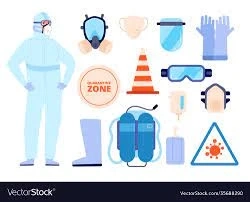The rising prevalence of Hospital Acquired Infections (HAIs) has contributed to the increased traction of medical clothing in healthcare settings. HAIs are infections that patients acquire during their stay in a healthcare facility, and they can be caused by various pathogens, including bacteria, viruses, and fungi. These infections pose a significant threat to patient safety and can lead to prolonged hospital stays, increased healthcare costs, and even mortality.
Medical clothing, such as gowns, gloves, masks, and other protective garments, plays a crucial role in preventing the transmission of pathogens between healthcare workers, patients, and the environment. These garments act as a barrier, protecting both patients and medical professionals from bodily fluids, contaminants, and infectious agents.
The use of appropriate medical clothing is essential in infection control practices, particularly in settings where there is a higher risk of exposure to infectious diseases. Healthcare facilities are increasingly recognizing the importance of implementing strict protocols and guidelines for the use of medical clothing to minimize the risk of HAIs.
The COVID-19 pandemic has further highlighted the significance of medical clothing in preventing the spread of infections. The use of personal protective equipment (PPE), including masks, gowns, and face shields, has become widespread to protect healthcare workers from the highly contagious SARS-CoV-2 virus.
As a result of these factors, the demand for medical clothing has witnessed a significant surge. Manufacturers are focusing on developing innovative and technologically advanced textiles and garments that provide enhanced protection, comfort, and durability. Antimicrobial properties, moisture-wicking capabilities, and breathability are some of the features incorporated into modern medical clothing to ensure optimal performance.
Furthermore, healthcare facilities are implementing rigorous infection control measures and investing in high-quality medical clothing to reduce the incidence of HAIs. This has led to the growth of the medical clothing market, with various market players striving to meet the increasing demand and offer improved solutions to address the challenges posed by HAIs.
In conclusion, the rising prevalence of Hospital Acquired Infections has propelled the demand for medical clothing in healthcare settings. The use of appropriate garments is crucial in preventing the transmission of pathogens and ensuring the safety of patients and healthcare professionals. As a result, the medical clothing market is experiencing significant growth and innovation, driven by the need to combat HAIs effectively.
Author's Bio-
Gayatri Mohite is a rising author with a passion for delving into uncharted territories. Fueled by an insatiable addiction to reading, she finds inspiration to craft her own stories. Alongside her writing endeavors, Gayatri's heart resonates with singing, traveling, and cooking. As a fresh talent, she constantly seeks to enhance her skills and has set forth on a new voyage to refine her expertise even further.


